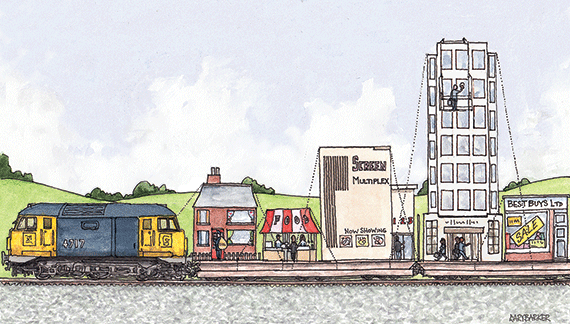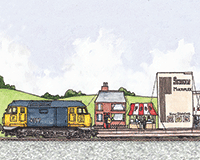 A few weeks ago, the government said it was aiming to develop railway hubs and surrounding land to deliver up to 10,000 new homes on sites around stations in the coming years.
A few weeks ago, the government said it was aiming to develop railway hubs and surrounding land to deliver up to 10,000 new homes on sites around stations in the coming years.
The government wants local councils to work with Network Rail and the Homes and Communities Agency to develop plans to maximise the productive use of land around England’s railway stations, using infrastructure as the stimulus to generate housing and new businesses.
York, Taunton and Swindon councils have already identified railway sites that could follow in the footsteps of thriving hubs such as Birmingham New Street, Manchester Victoria and London King’s Cross.
We support this initiative. High-quality infrastructure is crucial to creating great places, and to improving the environment for businesses, residents and visitors.
This initiative relies on public and private sector collaboration, and the door is open for both. Government is ready to hear from those in the development industry who want to work with local councils. For those who are imaginative, can work in partnership and think long-term about investment, there are real opportunities.
We often encourage the industry and government to look beyond short-term gains when considering placemaking, and schemes such as these are a case in point. Far-sightedness is needed to appreciate the long-term social and economic returns that such projects, which have the potential to bring about regeneration, may bring. Schemes of this scale take years to plan and execute, and results may not be visible until the next parliament.
This is something that the private sector must bear in mind as well, and indeed many of our members do take a patient approach to large-scale regeneration. A great example of this is those who are investing in build to rent, which could help to bring forward station regeneration.
Rented housing and stations are an excellent pairing. Tenants are attracted by proximity to transport options and bring footfall to the surrounding area. In addition to this, if delivered as part of an early development phase, build to rent can act as a catalyst for further development because of the income that can be generated quickly. The sector continues to gain traction and more local authorities understand its benefit.
It is difficult to write about government initiatives without also mentioning starter homes, as the government is intent on delivering 200,000 in the next few years. The starter homes fund is burning a hole in government’s pocket, and there is a real opportunity to think more broadly and to encourage development in these transport-based hubs as well.
BPF’s offer is for a long-term partnership with national and local governments to deliver essential infrastructure, great places and economic success. The announcement on stations regeneration embodies this partnership. If the industry can think long-term and work with the public sector to deliver a shared vision, the tortoise may win the race.
Melanie Leech is chief executive of the British Property Federation











